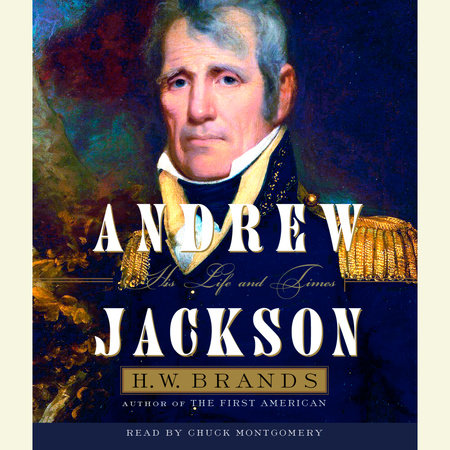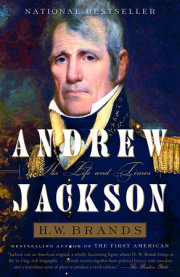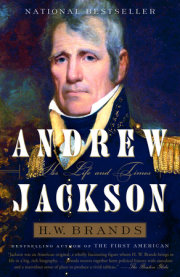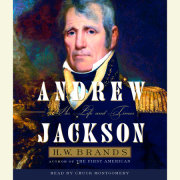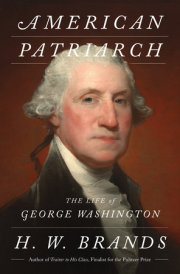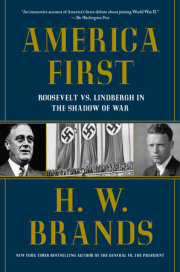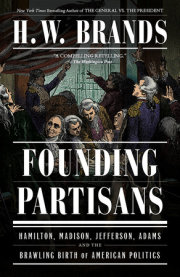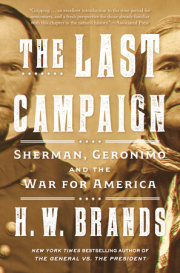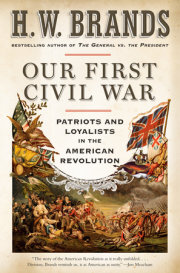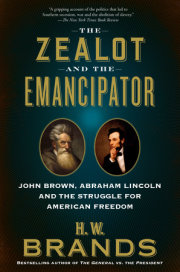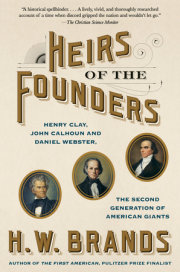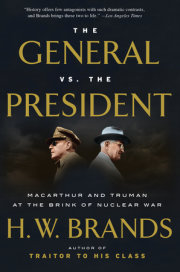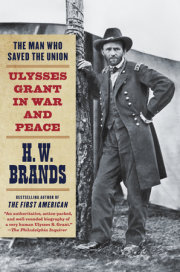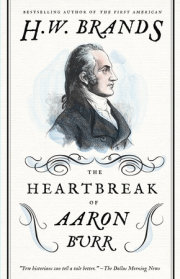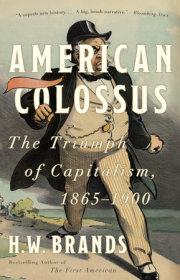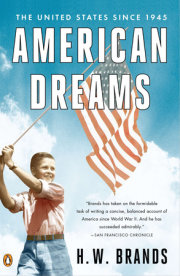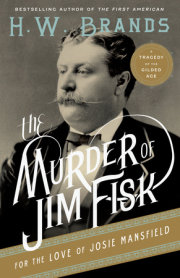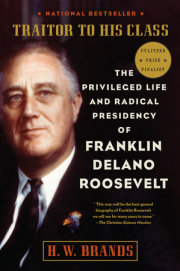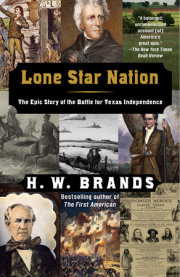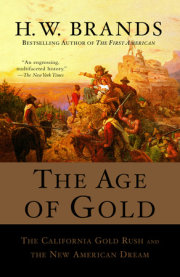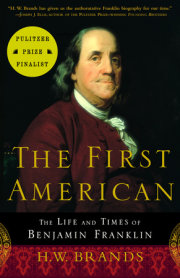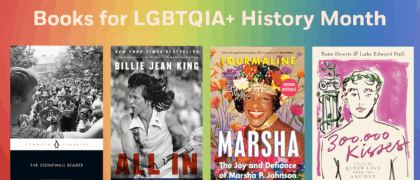1
THE PRIZE
The struggle for North America began long before Andrew Jackson was born. Like similar struggles on all the inhabited continents, it ran back millennia, perhaps to the moment humans first found their way across the Arctic plain from Asia. Oral tradition and archaeological evidence indicate that conflict was a regular feature of life among the North Americans. They fought for forests where the game was most abundant, for rivers where the fish were thickest, for bottomlands where their corn and beans and squashes grew most readily. Great warriors were the heroes of their tribes, emulated by other men, sought by women, hallowed in memory. Strong tribes expanded their territories, driving the weak to less-favored regions and sometimes to extinction. Diplomacy complemented military force: the Iroquois confederation made that alliance a terror to its neighbors.
The arrival of the Europeans added new elements to the competition. These far-easterners possessed weapons the aboriginals hadn't seen: steel knives, swords, and axes; muskets and rifles; cannon. But their most potent agents of conquest were ones neither they nor their victims understood: the pathogens to which long exposure had inured the Europeans but that devastated the native Americans. In many instances the novel diseases raced ahead of European settlers, who arrived to discover human deserts and concluded that the Christian God in his wisdom and power had prepared the way for their colonies.
But the diseases didn't kill all the Indians. Those who survived often welcomed the interlopers, at least at first. Especially after smallpox and the other epidemics killed as many as three-fourths of the members of the afflicted tribes, there seemed room enough for all. And the newcomers' traders brought goods the natives quickly learned to value: iron pots, which bested clay for durability; steel blades, which held an edge longer than flint or obsidian; rifles, which felled game at distances arrows couldn't reach and gave their possessors an advantage in battle over tribes that lacked them. Some purists among the Indians rejected everything European, but most of the natives adapted happily to the improved lifestyle the new technology brought.
In time, however, the palefaces got pushy. Their farmers followed the traders and expropriated Indian land. This was when the real struggle started. In New England in the 1670s a coalition led by a chief the English called King Philip contested the advancing settlement by destroying several towns and killing the inhabitants. The English fought back, with the help of Indians holding a grudge against Philip's group, and eventually won. Philip was beheaded and his captured followers enslaved.
The Indians' resistance grew more sophisticated. They discovered that the Europeans belonged to more than one tribe, with the French as hostile to the English as either were to any of the Indians. Some Indians sided with the French, others with the English, and when the French and English went to war--as they did once a generation--the various Indian tribes exploited the opportunities to their own advantage. The largest of the conflicts (called the French and Indian War by the English in America) began in 1754 and inspired the Delawares and Shawnees, allies of France, to try to drive the English away from the frontier. To this end they launched a campaign of terror against British settlements in the Ohio Valley. The terror began successfully and over three years threatened to throw the English all the way back to the coast. But British victories in Canada and elsewhere weakened the French and emboldened Britain's own allies, including the Iroquois, and when the war ended in 1763 the French surrendered all their North American territories.
This was good news for Britain's American subjects but bad news for nearly all the Indians of the frontier, including Britain's allies. As long as the British and French had vied for control in America, each had to bid for the support of the Indians, who learned to play the Europeans against one another. With the French departure the bidding ended and the Indians were left to confront British power alone.
The Ottawa chief Pontiac was among the first to appreciate the new state of affairs. The Ottawas had long been rivals of the Iroquois and were recently allies of the French. For both reasons they fought against the British in the French and Indian War. When that war ended in French defeat, Pontiac saw disaster looming for the Ottawas--and for Indians generally. A tall, powerful warrior with a striking mien, he was also a charismatic political leader and an adroit diplomat. The fighting between Britain and France had hardly ceased before he welded together a coalition of tribes dedicated to expelling the British from the interior of the continent. Pontiac's forces besieged Fort Detroit above Lake Erie during the spring of 1763. From there the offensive spread north and east along the Great Lakes and south into the Ohio Valley. One British garrison after another was surrounded and destroyed. As this was a psychological offensive as much as a military one, the methods of destruction often included the most gruesome treatment of those soldiers, traders, and dependents who fell into the attackers' hands.
The assault on a British fort at Mackinac showed the swiftness with which the Indians commenced their attacks and the brutality with which they completed them. Pontiac's campaign was spreading faster than the news of it, and the troops and traders at Mackinac knew of no reason to fear the large group of Ojibwas who approached the fort in amicable fashion and commenced a game of lacrosse immediately beneath the walls. The British came out to watch, as they did on such occasions. The intensity of the game mounted, until one of the players threw the ball close to the gate. The laughing, cheering spectators took no alarm when both teams tore after it. But then the players dropped their lacrosse sticks, snatched war axes from under the robes of their women, and rushed through the unguarded gate. The surprise was total and the carnage almost equally so. A trader named Alexander Henry, who managed to hide in a storage closet, left a chilling account:
Through an aperture, which afforded me a view of the area of the fort, I beheld, in shapes the foulest and most terrible, the ferocious triumphs of barbarian conquerors. The dead were scalped and mangled; the dying were writhing and shrieking under the unsatiated knife and tomahawk; and from the bodies of some, ripped open, their butchers were drinking the blood, scooped up in the hollow of joined hands, and quaffed amid shouts of rage and victory.
The story was much the same all along the frontier. The offensive continued to outrace reports of it, and in many cases the first intimation the English settlers and soldiers had of trouble was the arrival of war parties. One by one the garrisons fell, until Pontiac and his allies controlled the entire region west of Fort Pitt, at the forks of the Ohio. Isolated frontier settlements were even more vulnerable and the destruction was commensurately greater. Some two thousand settlers were killed, and about four hundred soldiers. Many others were taken hostage. Those who survived the attacks and evaded capture fled east, bearing tales of calamity and horror.
The British commander in North America, Jeffrey Amherst, a large man with a big nose and a deeply held conviction that his talents were being wasted in the colonies, received the news of the western disaster at his headquarters in New York. Although the reports shocked him, he wasn't surprised at the behavior of the Indians, whom he considered savages beneath regard by civilized men. This attitude was common among the British, and it had helped trigger the current uprising. (By contrast, the French, whose imperial policy relied less on displacing the Indians than on trading with them, developed a more sophisticated view of the indigenes.) Amherst terminated the practice of sending gifts to Britain's Indian allies, and he curtailed the trade in guns and ammunition. He judged that though the Indians had been useful against the French, now that the French were vanquished it was time to make the Indians understand who the true rulers of North America were.
While Amherst had to respect the fighting ability of the Indians, he blamed incompetence among his subordinates for the success of Pontiac's offensive. Upon receiving a report of a massacre of the British garrison at Presque Isle, which followed the fort's surrender by its commanding officer, he could hardly contain his anger. "It is amazing that an officer could put so much faith in the promises of the Indians as to capitulate with them, when there are so many recent instances of their never failing to massacre the people whom they can persuade to put themselves in their power," he wrote in his journal. "The officer and garrison would have had a much better chance for their lives if they had defended themselves to the last, and if not relieved, they had confided to a retreat through the woods or got off in a boat in the night. These people are undoubtedly murdered unless the Indians may have feared to do it lest we may retaliate. There is absolutely nothing but fear of us that can hinder them from committing all the cruelties in their power."
Amherst determined to answer the terror of the Indians with terror of his own. Knowing that the Indians rightly feared the white men's diseases more than anything else about the Europeans, he directed Henry Bouquet, the commander of the western district, to launch a campaign of biological warfare. "Could it not be contrived to send the smallpox among the disaffected tribes of Indians?" Amherst inquired. "We must on this occasion use every stratagem in our power to reduce them."
Bouquet responded at once. Some of his own troops were suffering from smallpox; he proposed to take blankets from the sick men and distribute them among the Indians. "I will try to inoculate the ------ with some blankets that may fall in their hands, and take care not to get the disease myself," he told Amherst. (Whether discretion caused him not to identify the targets or he hadn't decided which Indians to infect is unclear.)
Amherst approved the plan. "You will do well to try to inoculate the Indians by means of blankets, as well as to try every other method that can serve to extirpate this execrable race," he said.
Bouquet distributed the blankets. By the time he did, they may have proved redundant, as the smallpox had already jumped from the whites in the area to the Indians. Yet the outcome was certainly what Bouquet and Amherst desired. "The smallpox has been very general and raging among the Indians since last spring," an observer wrote several months later. A subordinate of Bouquet--who, unlike his commander, wasn't beyond pity--reported from the front, "The poor rascals are dying very fast with the smallpox; they can make but little resistance and when routed from their settlements must perish in great numbers by the disorders."
Aided by the epidemic, the British managed to roll back the Indian advances. Bouquet battered an Indian army at Bushy Run near Fort Pitt, and he sent his troops to burn Indian villages and drive off their inhabitants, many of whom then perished of hunger and disease. The villages were always the weak spot of Indians, for although Indian warriors were masters at raiding garrisons and terrorizing settlers, they lacked the numbers and firepower to defend their own women and children against British counterattack. In the face of Bouquet's scorched-earth strategy, Pontiac's allies fell away band by band and tribe by tribe, to make peace with the British.
Yet the outcome was far from an undiluted victory for British arms. To entice Pontiac's allies to the peace table, the British government recalled Amherst and repealed most of the measures the Indians resented. As a result, it wasn't hard for many of the Indians to conclude that, in dealing with the Europeans, war worked. (For Pontiac personally, the failure to drive the British from the Ohio marked a defeat from which he never recovered. His fellow Ottawas turned to others for leadership, and the younger warriors derided the old man as a relic of the past. In 1769 he was fatally stabbed by a Peoria Indian at a trading post on the Mississippi River. None of the Ottawas, not even his own sons, lifted a finger to avenge him.)
The lesson American colonists drew from Pontiac's War was similar in content to that drawn by the Indians but altogether different in tone. The uprising had sent shudders all along the American backcountry, from New York to Georgia. In every community that lived within sight or consciousness of the great forest that stretched away to the west, the reports of the Indian atrocities--with the torture of prisoners and the mutilation and cannibalism of the murdered recounted in excruciating detail--caused hearts to clutch and eyes to examine every grove of trees for signs of the enemy's approach. The flood of refugees from the war provided additional evidence of the scope and meaning of the Indian uprising. An inhabitant of Frederick, Maryland, noted, "Every day, for some time past, has offered the melancholy scene of poor distressed families driving downwards through this town with their effects, who have deserted their plantations for fear of falling into the cruel hands of our savage enemies, now daily seen in the woods." A witness in Winchester, Virginia, explained, "Near 500 families have run away within this week. I assure you it was a most melancholy sight to see such numbers of poor people, who had abandoned their settlements in such consternation and hurry that they had hardly anything with them but their children. And what is still worse, I dare say there is not money enough amongst the whole families to maintain a fifth part of them till the fall; and none of the poor creatures can get a hovel to shelter them from the weather, but lie about scattered in the woods."
For the refugees, and for the many more who held on to their homes but watched their cold, hungry compatriots stream by, the outcome of Pontiac's War was decidedly unsatisfactory. Except for the traders, who required the Indians as customers, nearly all the Americans who lived anywhere near the frontier considered the Indians an existential danger. Few would have mourned had every one of the natives fallen victim to British arms or European disease. And when the post-Pontiac settlement essentially restored the status quo, the Americans once more saw the tomahawk hanging over their heads.
Among those who fought against Pontiac were members of a peculiar tribe with origins in the foggy North Atlantic. During the first decade of the seventeenth century--at the same time as the founding in America of English Jamestown and French Quebec--King James of England and Scotland planted a colony of English and Scots in the north of Ireland. The purpose of the Ulster plantation was to subdue the unruly Irish, who were considered by the English to be fully as savage as the Indian tribes of North America. So refractory were they that few Englishmen accepted James's invitation to emigrate to Ulster, leaving it to the Scots to claim the Irish territory James opened to them. Nor were these just any Scots, but bands of Lowlanders who had fought for centuries against rival tribesman--or clansmen--of the Scottish Highlands. The centuries of battle had forged a character equal to almost any challenge requiring courage and determination. As one Scotsman explained, "When I do consider with myself what things are necessary for a plantation, I cannot but be confident that my own countrymen are as fit for such a purpose as any men in the world, having daring minds that upon any probable appearance do despise danger, and bodies able to endure as much as the height of their minds can undertake." Another Scotsman, perhaps more candid, characterized those who accepted James's offer rather differently: "Albeit amongst these Divine Providence sent over some worthy persons for birth, education and parts, yet the most part were such as either poverty, scandalous lives, or, at the best, adventurous seeking of better accommodation, set forward that way."
Copyright © 2005 by H.W. Brands. All rights reserved. No part of this excerpt may be reproduced or reprinted without permission in writing from the publisher.

